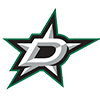If you've enjoyed season-long fantasy basketball leagues in the past, the daily version of the game can add an entirely new dimension to the sport you already avidly follow. NBA-themed daily leagues brings all the excitement and robust scoring that you've grown accustomed to in your season-long leagues, but without all of the ongoing weekly maintenance because you are able to discard last night's roster and start anew with each slate.
ROSTER CONSTRUCTION
Become acquainted with how daily fantasy basketball rosters are composed on different sites across the industry, or at least the ones you're strongly considering trying out. As with other sports, there is some variance between the different DFS platforms.
For example, DraftKings features a roster with all five positions found on an actual NBA team, while also adding an extra guard and forward position, and a utility spot that can be filled with any player.
FanDuel follows a more regimented model that requires you to roster two players apiece at each real-world position on an NBA roster with the exception of center, where you only roster one.
FantasyAces utilizes a unique design in which you roster three guards and forwards apiece, regardless of designation, along with a center and two utility spots.
Just by these three examples, you get the gist that there is plenty of variety around the industry in terms of rosters, so familiarizing yourself with what's out there is a good starting point.
SALARY CAPS
Along with roster construction variance, there are also differences in the values of the salary cap among each site. Becoming acquainted with how to build rosters under salary restrictions can be one of the more drastic differences for players migrating to the daily game from season-long leagues, so it's not a bad idea to start cutting your teeth at this particular aspect through some free rolls on different sites.
Doing so will allow you to take a risk-free crash course on building a solid team on a budget, while also getting first-hand knowledge on how the varying salary cap figures on each site—not to mention the differences in pricing for each player across the industry—affects your decisions.
CONTEST TYPES
Familiarizing yourself with different contest types is another important aspect of acclimating to the daily game. By and large, sites across the industry offer contests under two major categories: Guaranteed Prize Pools (GPPs), which are also commonly referred to as tournaments, and cash games.
GPPs/Large-field tournaments: These are often the most popular contests in DFS, as they offer the largest prize pools in terms of overall value. In fact, large-field tournaments are very likely what may have put DFS on your radar. Due to the size of many of these contests, as well as the fact that they often pay out 20 percent of the field or less, they also can be quite challenging to place in.
Leagues: Leagues in DFS are not unlike their season-long counterparts in terms of overall structure, and they are similar to tournaments in the sense that under half the field is paid. However, they differ in the sense that they do not run if they are not filled. In a sense, you can consider them a GPP/cash game hybrid, but for purposes of lineup building strategy, they fit best within the GPP category. Leagues can range in size from as few as three players to over 100 .
Cash Games
50/50s: As the name implies, these contests pay out exactly half the field. Payout is the same for all players finishing in cashing positions and typically includes a 20 percent "rake" (percentage of each entry fee taken by the site), so winners are paid slightly less than twice their entry fee.
Head-to-Heads: This is the contest type that would be most familiar to the overwhelming majority migrating over from season-long leagues. Simply put, you do battle with only one opponent and the lineup with the most points wins. Of course, in DFS, the entire player pool is available to both participants, so you and your opponent are likely to have some overlap in your lineups.
Multipliers (Double-Ups, Triple-Ups, Quadruple-Ups, etc.): Similar to 50/50s, except those finishing in cashing positions double (or triple or whatever other increment may apply) their money. Another key difference is that unlike 50/50s, less than half the field gets paid.
ALLOCATING RESOURCES
Becoming acquainted with what positions tend to provide the best returns in terms of fantasy points is an essential aspect of allocating your salary cap resources wisely. Once again, if you've already sharpened your skills in the season-long game before giving DFS a whirl, you're likely to be familiar with what positions yield the most prolific fantasy players.
Regardless of your experience level, however, breaking the ice with a few free contests will give you a sense of how this unfolds within a DFS contest. For example, while you generally want to invest heavy resources in point guards due to how often the ball is in their hands, there are nights when an injury to a starter opens up value at the position, thereby allowing you to throw big dollars at a position you would only spend up at with rare exception, such as shooting guard or small forward.
Knowing when and where to save some cash and where to spend up is an integral part of success in daily fantasy basketball and is often dictated by matchup and expected usage. With the NBA often being very different each night in terms of which players are active and the quality of opponents they are facing, it can be especially beneficial to work through many of these scenarios by getting in some "practice reps" on free contests as you acclimate to the daily game.






































